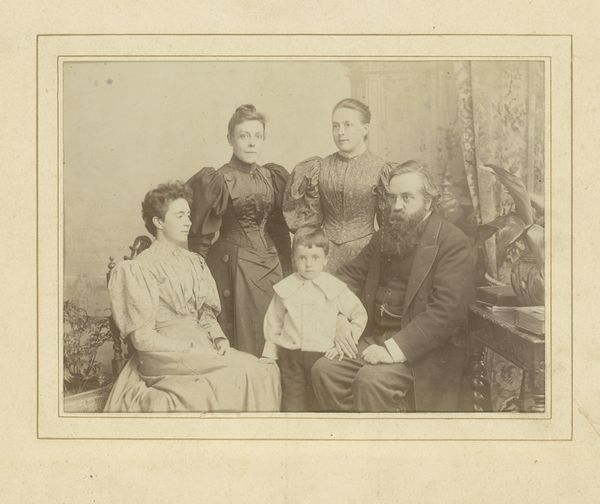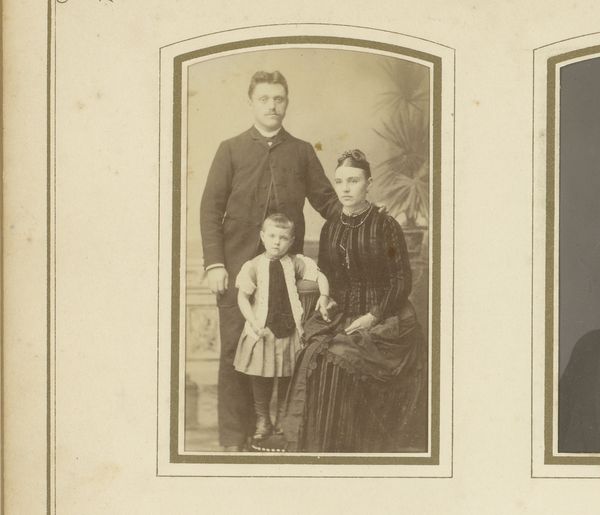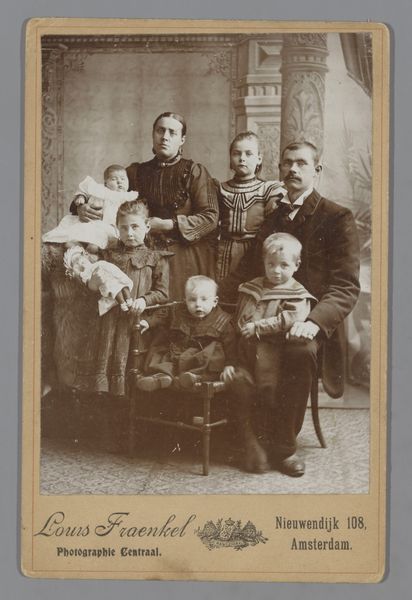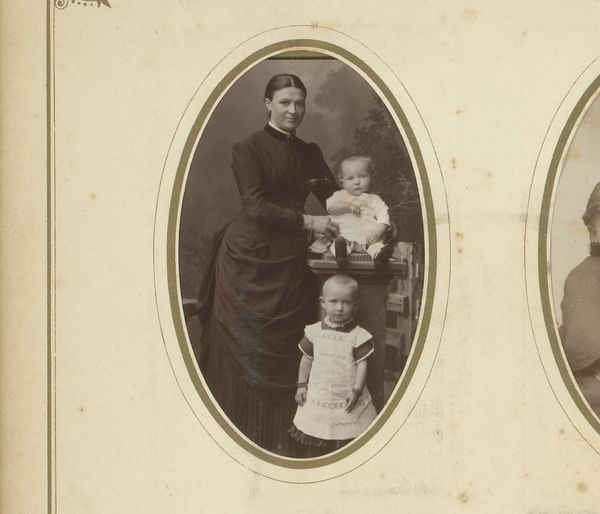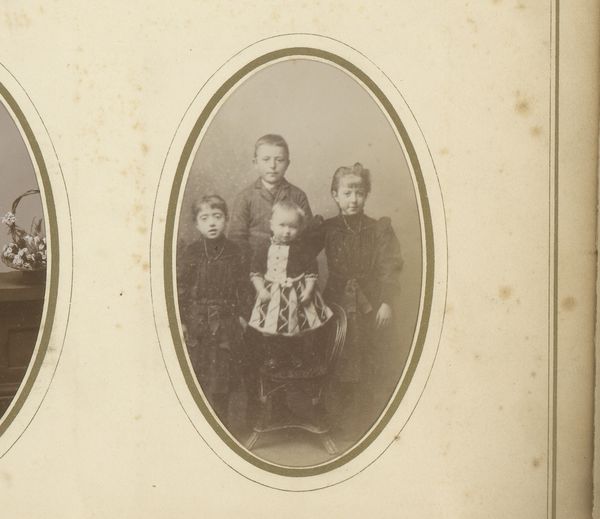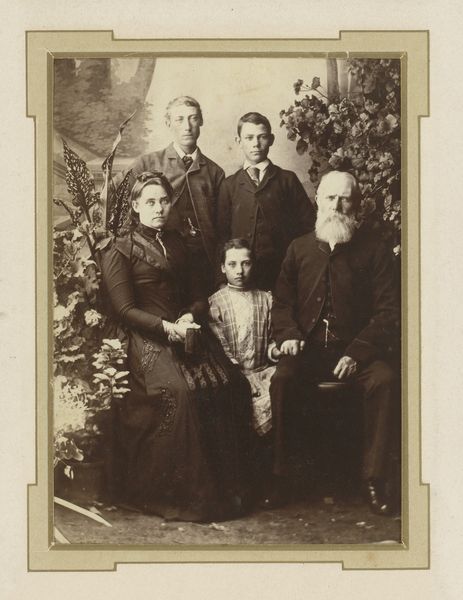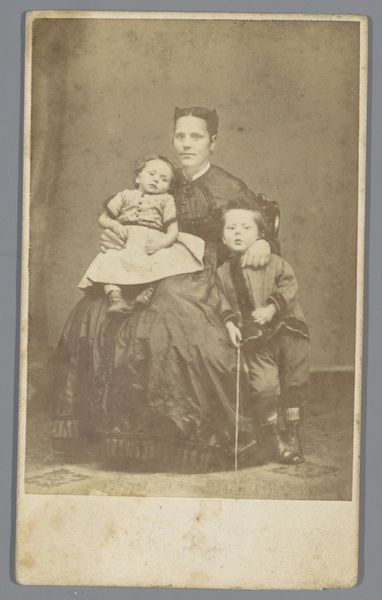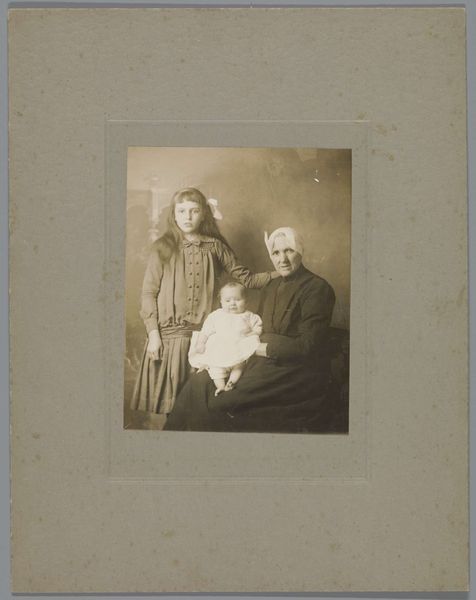
photography
#
portrait
#
aged paper
#
toned paper
#
photography
#
child
#
pencil drawing
#
group-portraits
#
realism
Dimensions: height 100 mm, width 140 mm, height 108 mm, width 166 mm
Copyright: Rijks Museum: Open Domain
This photographic print portraying a family was made by Bernardus Bruining in the late 19th century. Photography transformed portraiture, making it accessible to a broader public, beyond the wealthy elite who could afford painted likenesses. The sepia tone you see results from the developing process, where silver particles react to light on the coated paper. Note the stillness of the figures; longer exposure times meant subjects had to remain motionless. The very act of creating such images influenced social dynamics, marking a shift in how families presented themselves. Photography democratized image-making, but it was still work. The photographer needed technical skill and specialized equipment. The development of photography as a practice parallels the rise of industrial manufacturing; from specialized labor to an increased focus on distribution and consumption. Considering this, we see how materials and process intertwine with social and economic contexts. Photography, once a novelty, became deeply embedded in everyday life.
Comments
No comments
Be the first to comment and join the conversation on the ultimate creative platform.
